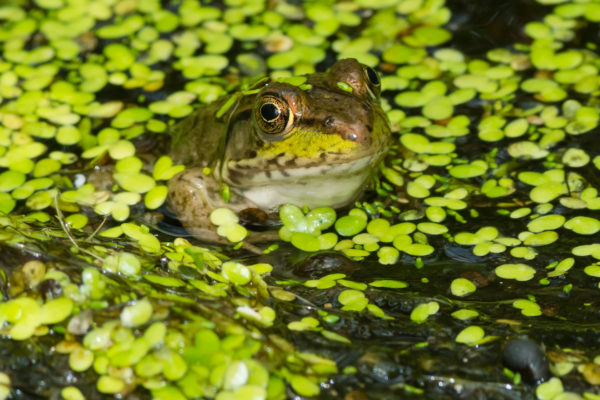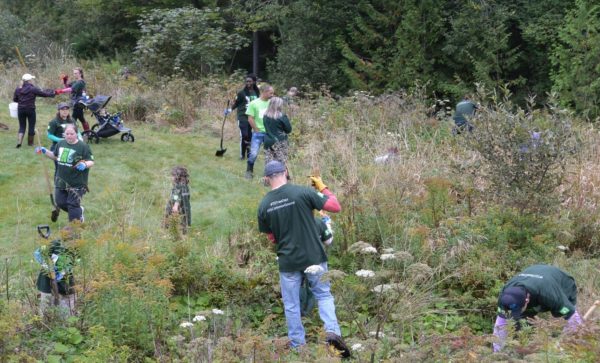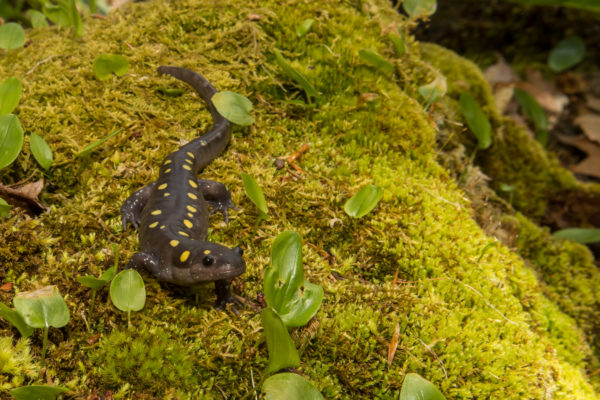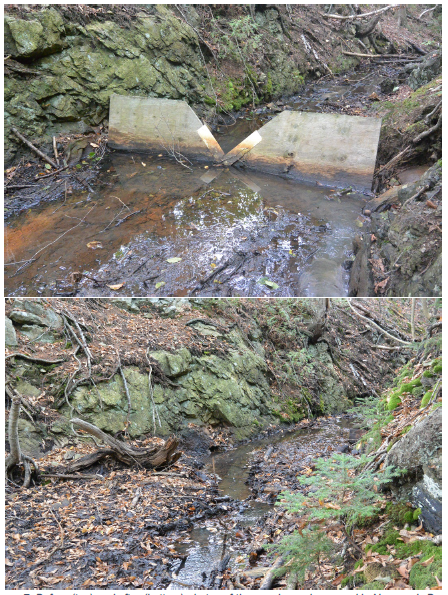Shining Light on a Forgotten River
You can’t see much of Newman’s Brook in the north end of Saint John, N.B. But trust us, the river is there: running underneath the roads, the housing developments and the suburban plazas.
Northern green frog (c) Paul Reeves Photography
Like many urban watercourses, big stretches of Newman’s Brook were buried over the past two centuries to make room for an expanding city. Today, it’s treated as part of the stormwater network that drains into the St. John River. Look hard, though, and you’ll still find, brook trout, green frogs and other aquatic creatures swimming and splashing in its waters.
Now, those species have new best friends: a group of eco-heroes armed with hip waders and a passion for conservation.
With support from WWF’s Restoration Fund, established in partnership with Coca-Cola Canada, the Saint John chapter of the Atlantic Coastal Action Program (ACAP) has begun “daylighting” the brook. By pulling out old culverts, they are returning the flow of water to its natural rate, reducing the impact of pollution and creating a more naturalized environment.
ACAP Saint John has also rallied the community to help restore the watershed — and the community has responded in a big way. When we visited last November, a group of local youths were planting bur oaks with gusto, despite the chilly temperatures.
In total, Saint John volunteers planted close to 500 trees and shrubs last year along Newman’s Brook and neighbouring Caledonia Brook. When they grow, those plants will not only provide habitat for birds and mammals, they’ll also shade the water, creating more comfortable temperatures for the fish that live there.
Those efforts are backed up by solid science. ACAP staffers have spent many hours testing water quality and monitoring invasive species. They’ve walked the entire length of the brook and its tributaries, assessing water flow and habitat and noting areas that needed improvement.
Sometimes they encountered surprises, like an old wooden weir in the upper reaches of Newman’s Brook. Clearly neglected for many years, it was preventing fish from going farther upstream. Back in the office, ACAP switched into detective mode. It turned out the weir had been installed more than 30 years ago to measure water flow and had subsequently been forgotten.
In September, an ACAP team armed with appropriate field equipment and safety gear headed back to the site to demolish the abandoned weir. A big rainstorm later that day finished the job, washing away three decades of sediment. As a result, brook trout, blacknose dace and other native fish can now swim freely upstream.
Judging by the detailed management plan ACAP Saint John has created for Newman’s Brook and Caledonia Brook, this is just the beginning. “Hopefully, in the next ten years if you’re out here in Saint John, you’ll see some real big changes on these watersheds,” says Graeme Stewart-Robertson, the organization’s Executive Director.
We believe him — and we’re proud to support such great work.
https://www.facebook.com/WWFCanada/videos/10156186412775719/
WWF’s Restoration Fund was established in partnership with Coca-Cola Canada to fund on-the-ground projects like these in some of Canada’s most threatened watersheds.





